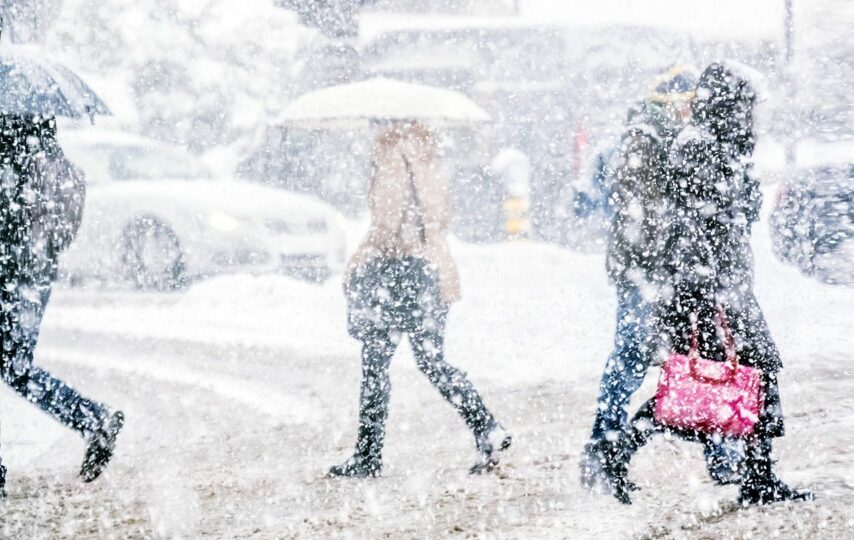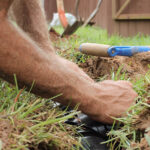Winters are harsh to our bodies as they extract moisture and give us dry, cracked skin. Similarly, freezing temperatures can cause cracks in concrete surfaces, and the freeze-thaw cycle can break down concrete over time. Therefore, it’s crucial to protect the concrete in the cold weather just like we protect our bodies. Of course, nobody wants to see cracks after newly doing concrete polishing in Geelong. But how?
This article answers how to protect concrete floors and driveways in freezing temperatures and maintain longevity. Read on to learn the professionally-approved tips for safeguarding concrete-
Apply De-icing Products Sparingly
De-icing products melt ice on contact, making them ideal for clearing driveways and sidewalks. However, these products can harm your concrete if used frequently or in excess amounts. That’s because de-icing products often contain components that are corrosive and can cause damage to both the surface and structure of your concrete.
One way to protect your concrete from damage caused by de-icing products is to use a de-icer designed explicitly for use on concrete. These are typically less harsh on the concrete and are less likely to cause damage. You should also follow the instructions on the product label carefully, as using too much de-icer can cause damage to the concrete. Apply de-icing products sparingly and only when necessary to avoid this damage.
Clean Up Snow & Ice Promptly
It is essential to promptly clean up any snow and ice that accumulates on your concrete surfaces. If left untreated, the weight of the snow and ice can cause cracks and damage the concrete. Additionally, the thawing and freezing process can also lead to damage as the water expands and contracts within the concrete. To protect your concrete in cold weather, follow these steps:
- Shovel snow as soon as it accumulates: The longer the snow sits on the concrete, the heavier it becomes. It can lead to cracking and other damage.
- Use a de-icer: De-icers such as rock salt or calcium chloride can help to melt the snow and ice and prevent it from refreezing. However, be cautious, as these chemicals can damage the concrete if used excessively or left on the surface for too long.
- Use a snow blower: If you have a large area of concrete to clear, using a snow blower can make the job easier and more efficient.
- Avoid using a metal shovel: Metal shovels can scratch and damage the concrete surface. Instead, opt for a plastic or rubber shovel to remove the snow and ice.
Seal Your Concrete Surface Regularly
Concrete is durable and long-lasting but can still be damaged by extreme weather conditions, especially in colder climates. One way to protect your concrete surface from damage is to seal it regularly. Sealing your concrete helps to create a barrier preventing water and other contaminants from penetrating the surface. It can help to avoid damage from freeze-thaw cycles and other harsh weather conditions.
To seal your concrete surface, you will need to choose a sealer appropriate for your particular type of concrete and the intended use of the surface. Many different types of sealers are available, including penetrating sealers, film-forming sealers, and decorative sealers. Choosing the correct type of sealer for your needs is essential, as each has its benefits and drawbacks.
Once you have chosen the appropriate sealer, you will need to prepare the surface of your concrete before applying the sealer. It may involve pressure washing, sanding, or other surface preparation technique. Once the surface is clean and dry, you can use the sealer according to the manufacturer’s instructions which usually involves applying the sealer with a roller, brush, or sprayer.
Following the manufacturer’s instructions when sealing your concrete surface is essential to ensure you get the best results. You may need to apply multiple coats of sealer to achieve the desired level of protection, and you may need to allow the sealer to dry for a certain amount of time before using the surface. By following these guidelines, you can help protect your concrete surface from damage and ensure that it remains in good condition for many years.
Most workers apply to seal during concrete polishing in Geelong so that the floor remains protected for a long time. Additionally, one must seal the concrete every few years to maintain its life.
Insulate the concrete
You can use a concrete insulating blanket to help keep the heat in and the cold out. To insulate concrete in cold weather, you can use any of the following methods:
- Use a concrete blanket: A concrete blanket is a specially designed insulation material to cover the concrete surface. It consists of a layer of insulation material, such as fibreglass or foam, surrounded by a layer of plastic or fabric. The blanket is placed over the concrete and held with stakes or weights to keep it from blowing away.
- Use a heat source: You can use a heat source such as a heater or a warm air blower to keep the concrete warm. This method is most effective when combined with a concrete blanket or other insulation material.
- Use a curing compound: A curing compound is a special type of coating applied to the surface of the concrete to protect it from the elements. It helps to keep the concrete moist and warm, which can help to prevent cracking and other damage caused by cold weather.
By following these methods, you can effectively insulate your concrete and protect it from the damaging effects of cold weather.
Summing Up
Wintertime is challenging, especially when protecting your concrete surfaces from cold weather damage. By following the above tips, you should be able to ensure that your concrete surfaces stay safe throughout even the harshest winter storms. Additionally, all these strategies will help maintain the beautiful aesthetic of your outdoor spaces so you can enjoy them year-round.
Contact Excon Group if you want to know more about protecting concrete floors during the harsh winters or if you have requirements related to concrete polishing, grinding etc.








